|
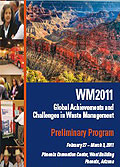
|
 |
|
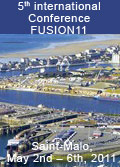 |
 |
|
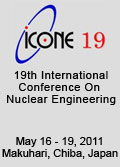
|
 |
|
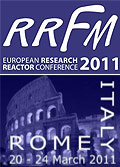
|
 |
|
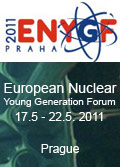
|
| |
|
|
|
|
Si no desea recibir mas este Boletín haga click aqui. |
|
|
|
|
|
|
|
|
|
|
|
|
|
|
|
 |

 |
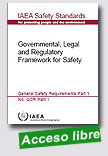 |
Governmental, Legal and Regulatory Framework for Safety
IAEA Safety Standards Series, 2010, 40 p.
The objective of this Safety Requirements publication is to establish requirements in respect of the governmental, legal and regulatory framework for safety. The framework for safety is to be established for the entire range of facilities and activities, from the use of a limited number of radiation sources to a nuclear power programme. Not all the safety requirements are relevant for all States; account has to be taken of the circumstances pertaining in the State and of the radiation risks associated with its facilities and activities.
|
Extraído de:
http://www-pub.iaea.org/MTCD/publications/PDF/Pub1465_web.pdf
|
 |
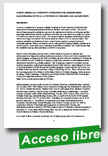 |
North American Consensus Guidelines For Administered Radiopharmaceutical Activities In Children And Adolescents
Pediatric Dose Reduction Workgroup, 2010, 10 p.
A Workgroup composed of leaders pediatric nuclear medicine physicians, technologists and physicists in North America, representing the Society of Nuclear Medicine (SNM) through the Pediatric Imaging Council, and also the Society for Pediatric Radiology and the American College of Radiology (ACR). has issued Consensus Guidelines for Administered Radiopharmaceutical Activities In Children and Adolescents.
These efforts have had the encouragement of the Alliance for
|
Radiation Safety in Pediatric Imaging, which sponsors the Image Gently Campaign.
The Pediatric Dose Reduction Workgroup was co-chaired by Drs. Ted Treves, Michael Gelfand and Meg Parisi. Consensus sessions took place at the SNM Annual Meeting, Toronto, Ontario, in June, 2009, The Society for Pediatric Radiology Annual Meeting. Boston, Massachusetts, in April 2010 and at the SNM Annual Meeting, Salt Lake City, Utah, in June 2010.
Extraído de: http://www.pedrad.org/ |
 |
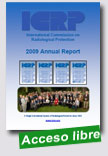 |
ICRP 2009 Annual Report
International Commission on Radiological Protection (ICRP), 2010, 40 p.
The International Commission on Radiological Protection (ICRP) is the primary inter-national body in protection against ionising radiation. ICRP is a registered charity and is thus an independent non-governmental organisation. It was formed in 1928, at the second International Congress of Radiology, as the ‘International X-ray and Radium Committee’, to advance for the public benefit the science of radiological protection.
ICRP adopted its present name in 1950 to reflect its growing |
involvement in areas outside that of occupational exposure in medicine, where it originated.
ICRP provides recommendations and guidance on protection against the risks asso-ciated with exposure to ionising radiation, from artificial sources widely used in medi-cine, general industry and nuclear enterprises, and from naturally occurring sources. These reports and recommendations are published on behalf of the ICRP in the An-nals of the ICRP. Each issue provides in-depth coverage of a specific subject area.
Extraído de:
http://www.icrp.org/downloadDoc.asp?document=docs/ICRP Annual Report 2009.pdf
|
 |
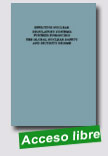 |
This publication is the proceedings of the second international conference on effective nuclear regulatory systems convened by the IAEA. The conference brought together senior nuclear safety, radiation safety and security regulators from around the world to discuss how to improve regulatory effectiveness to ensure protection of the public and the environment. At that conference, senior regulators decided that a forum dedicated to discussing regulatory effectiveness was needed every three years. |
Accordingly, the IAEA organized the second conference on this subject, in Cape Town in December 2009, with a focus on further enhancing the global nuclear safety and security regime. The conference identified several issues for consideration by governments, regulatory bodies, stakeholders, and issues for future international cooperation. These proceedings include a summary, the opening and closing speeches, the invited papers, and the President’s summary. A CD-ROM, which is attached to the back of this publication, contains the contributed papers and presentations.
Extraído de:
http://www-pub.iaea.org/MTCD/publications/PubDetails.asp?pubId=8478
|
 |
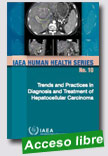 |
Trends and Practices in Diagnosis and Treatment of Hepatocellular Carcinoma
IAEA Human Health Series, 2010, 94 p.
This publication has been written for students and professionals in radiation oncology and cancer control programmes. It serves as a source of information on treatment decisions with regard to hepatocelluar carcinoma (HCC) or liver cancer. Radiotherapy plays a major role in the treatment of HCC, which is one of the most common causes of cancer death globally. However, to date there were no uniform recommendations, and the use of radiotherapy is limited by pre-existing liver disease. The present |
publication reports the results of an assessment of the role of radiotherapy within the entire framework of HCC management. It may guide the appropriate use of limited resources towards the most appropriate indications, and help in differentiating approaches used for cure or palliation of HCC.
Extraído de:
http://www-pub.iaea.org/MTCD/publications/PubDetails.asp?pubId=835
|
 |
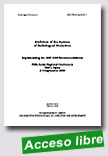 |
Evolution of the System of Radiological Protection
Nuclear Energy Agency (NEA), 24 Sep. 10, 28 p.
Since 2002, the NEA has been actively facilitating the detailed discussion of the evolving system of radiological protection in an Asian context. Its work in this area has included four previous conferences to discuss various International Commission on Radiological Protection (ICRP) draft general recommendations. The Fifth Asian Regional Conference on the Evolution of the System of Radiological Protection was the first in this series to be focused directly on the implementation of the new ICRP
|
recommendations. This conference report provides very useful, practical insight into the Asian approach to implementing this new radiological protection philosophy.
Extraído de:
http://www.nea.fr/pub/ret.cgi?id=new#6350
|
 |
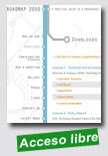
|
Roadmap 2050 - A Practical Guide to a Prosperous, Low-carbon Europe
European Climate Foundation (ECF), 2010, s. p.
The mission of Roadmap 2050 is to provide a practical, independent and objective analysis of pathways to achieve a low-carbon economy in Europe, in line with the energy security, environmental and economic goals of the European Union. The Roadmap 2050 project is an initiative of the European Climate Foundation (ECF) and has been developed by a consortium of experts funded by the ECF.
|
Extraído de: http://www.roadmap2050.eu/
|
 |
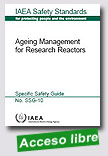 |
Ageing Management for Research Reactors
IAEA Safety Standards Series, 2010, 52 p.
This Safety Guide provides practical guidance and recommendations on ageing management for the safety related systems, structures and components of research reactors on the basis of current international good practices. It is intended for use by operating organizations in establishing, implementing and improving ageing management programmes for research reactors, and by regulatory bodies in verifying that ageing of research reactors is being effectively managed. The Safety
|
Guide focuses on managing the physical ageing of systems, structures and components important to safety, and also provides guidance on safety aspects of managing obsolescence.
Contents: 1. Introduction; 2. Management system for ageing management; 3. Ageing and safety of research reactors; 4. Ageing considerations in different phases of research reactor lifetime; 5. Basic elements of an ageing management programme; 6. Management of obsolescence; 7. Interfaces with other technical areas.
Extraído de:
http://www-pub.iaea.org/MTCD/publications/PubDetails.asp?pubId=841
|
 |
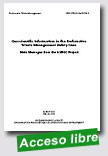 |
Geoscientific Information in the Radioactive Waste Management Safety Case - Main Messages from the AMIGO Project
Nuclear Energy Agency (NEA), 24 Sep. 10, 56 p.
Radioactive waste is associated with all phases of the nuclear fuel cycle as well as the use of radioactive materials in medicine, research and industry. For the most hazardous and long-lived waste, the solution being investigated worldwide is disposal in engineered repositories deep underground. The importance of geoscientific information in selecting a site for geological disposal has long been recognised, but there has been growing
|
acknowledgement of the broader role of this information in assessing and documenting the safety of disposal. The OECD/NEA Approaches and Methods for Integrating Geological Information in the Safety Case (AMIGO) project has demonstrated that geological data and understanding serve numerous roles in safety cases. The project, which ran from 2002 to 2008, underscored the importance of integrating geoscientific information in the development of a disposal safety case and increasingly in the overall process of repository development, including, for example, siting decisions and ensuring the practical feasibility of repository layout and engineering.
This publication is also available in French as: Rôle des informations géoscientifiques dans le dossier de sûreté pour la gestion des déchets radioactifs : Principales conclusions du Projet AMIGO - http://www.nea.fr/pub/ret.cgi?id=6396
Extraído de: http://www.nea.fr/pub/ret.cgi?id=new#6395
|
 |
|
|
|
|
|
|
|
|
|
|
|
|
|
|
